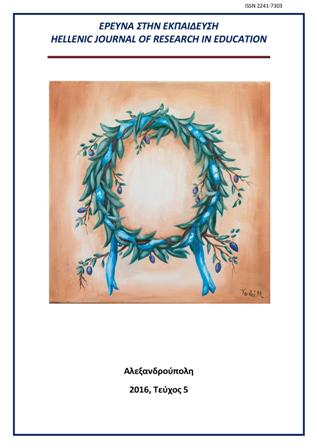Investigation of 6th grade students' expectations regarding the transition to Gymnasium

Abstract
The purpose of this research field was the investigation of 6th grade students' expectations regarding the educational and psychosocial parameters of six Gymnasium functions. The data were collected through an improvised written questionnaire with 7 open questions. The questionnaire was completed by 286 students from 13 public Elementary Schools located in the center of Thessaloniki Center in May 2015. The processing of student’s answers was achieved by the method of grounded theory. According to the research findings most boys and most girls of the sample: a) had positive expectations of building relationships with peers and their non-involvement in bullying incidents in Gymnasium, b) had negative expectations towards learning new subjects, achieving high performance in written tests and final examinations and toward the existence of institutional sanctions, c) had neither positive nor negative expectations as to building relationships with teachers in Gymnasium. Based on the above there is the need for targeted two-year educational activities to be designed and implemented, under the guidance of primary and secondary education school counselors and the supervision of the Ministry of Education, including: a) the creation of specialized educational programs of transition of the responsible institutions (Counseling and Guidance Administrations, Universities), b) the basic and in-service education of teachers in implementing these programs, c) inter-scientific support for teachers and parents by specialists on mental health regarding issues in transition. The most important is, however for a new socio - educational policy to be established by the Institute of Education Policy, promoting the consistency and continuity of education and learning from the Elementary School to the Gymnasium on the grounds of aims, content and methodology. As a result graduates of Primary School having acquired basic socio-cognitive skills and positive expectations will be able to adapt to the new school environment of Gymnasium under the mildest and smoothest psychosocial conditions.
Article Details
- How to Cite
-
Σιδηρόπουλος Δ. Α. (2016). Investigation of 6th grade students’ expectations regarding the transition to Gymnasium. Hellenic Journal of Research in Education, 5(1), 46–61. https://doi.org/10.12681/hjre.9987
- Issue
- Vol. 5 No. 1 (2016)
- Section
- Articles

This work is licensed under a Creative Commons Attribution-NonCommercial-ShareAlike 4.0 International License.
Authors who publish with this journal agree to the following terms:
- Authors retain copyright and grant the journal right of first publication with the work simultaneously licensed under a CC-BY-NC-SA that allows others to share the work with an acknowledgement of the work's authorship and initial publication in this journal.
- Authors are able to enter into separate, additional contractual arrangements for the non-exclusive distribution of the journal's published version of the work (e.g. post it to an institutional repository or publish it in a book), with an acknowledgement of its initial publication in this journal.
- Authors are permitted and encouraged to post their work online (preferably in institutional repositories or on their website) prior to and during the submission process, as it can lead to productive exchanges, as well as earlier and greater citation of published work (See The Effect of Open Access).


